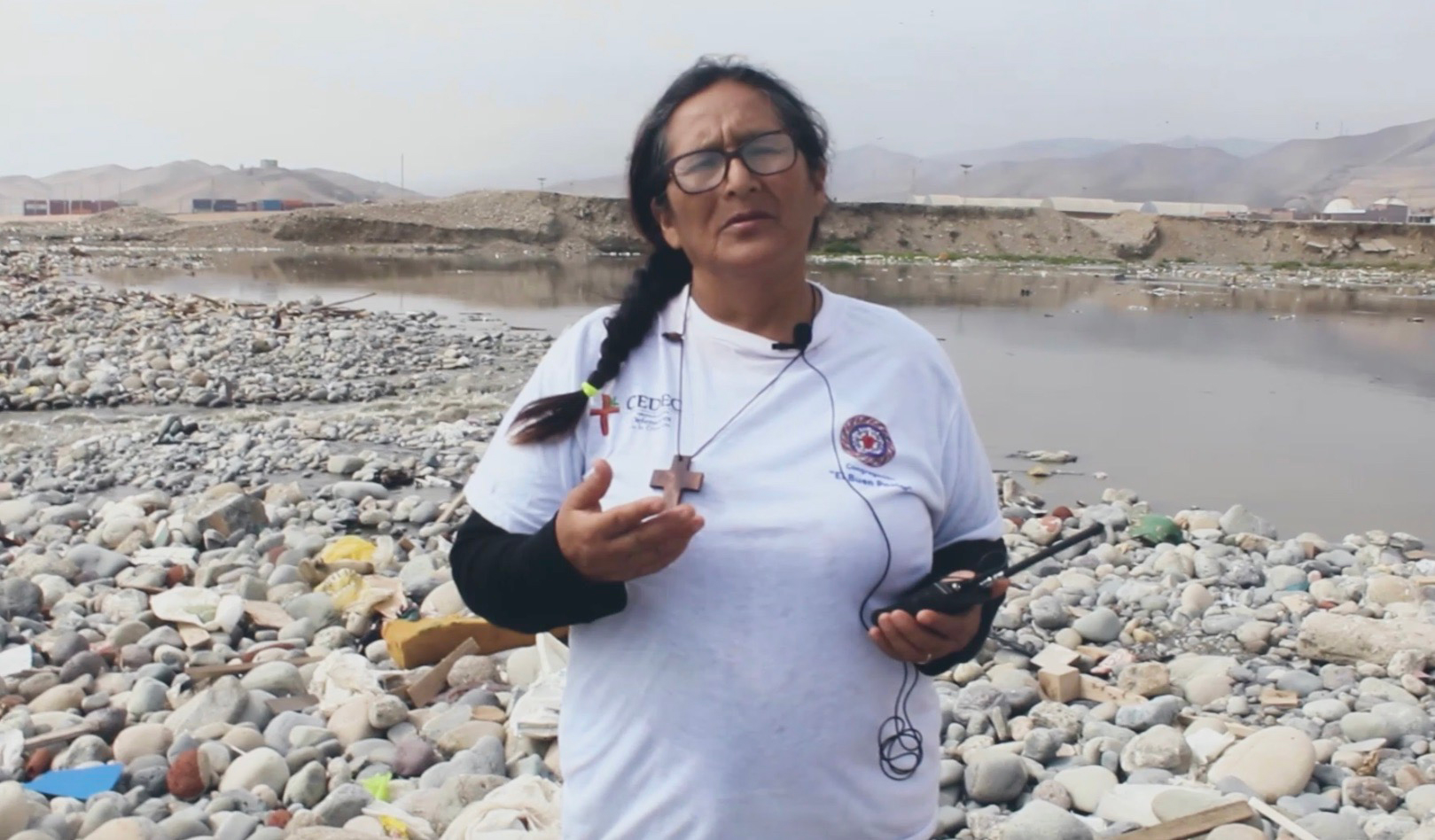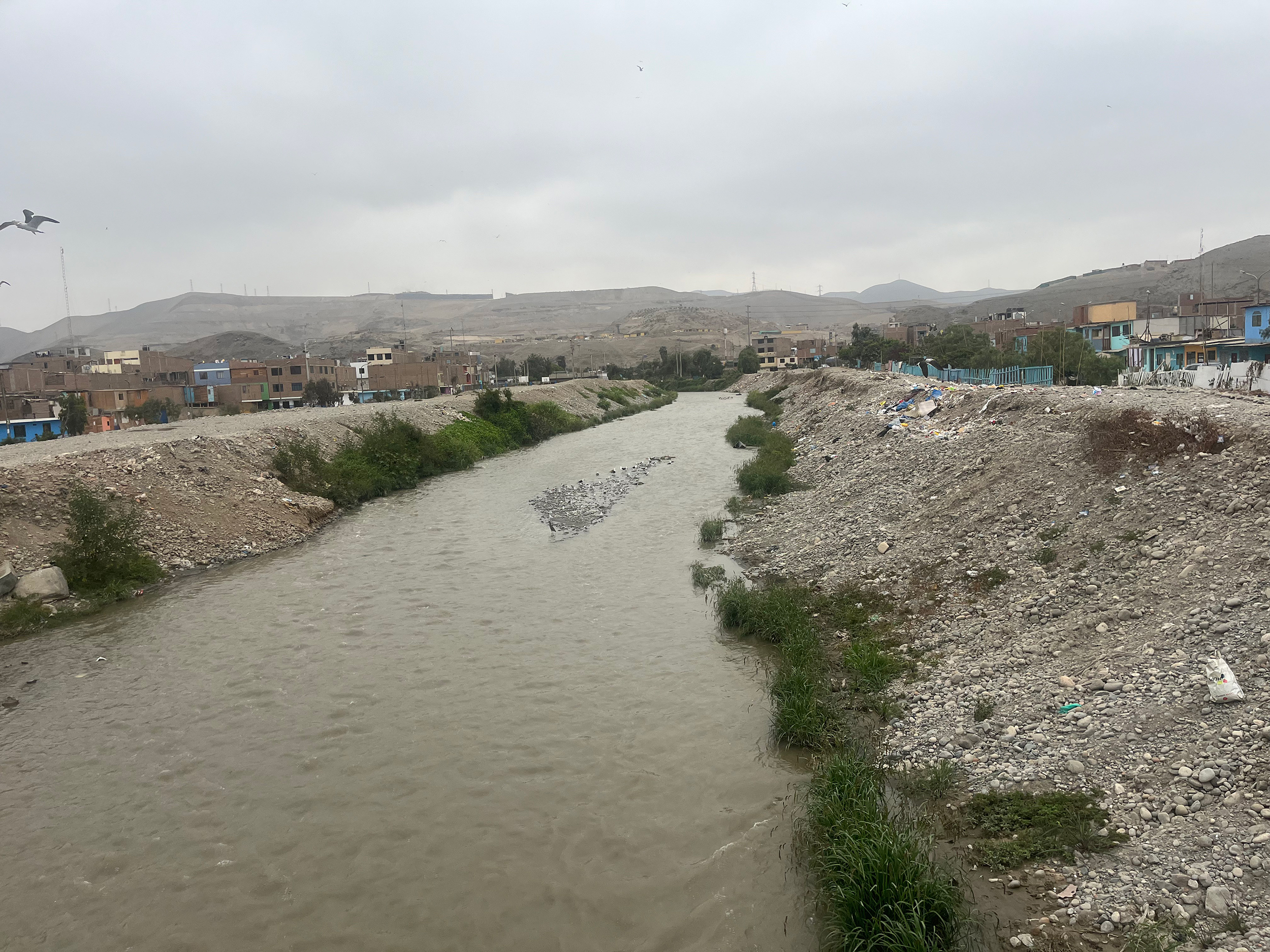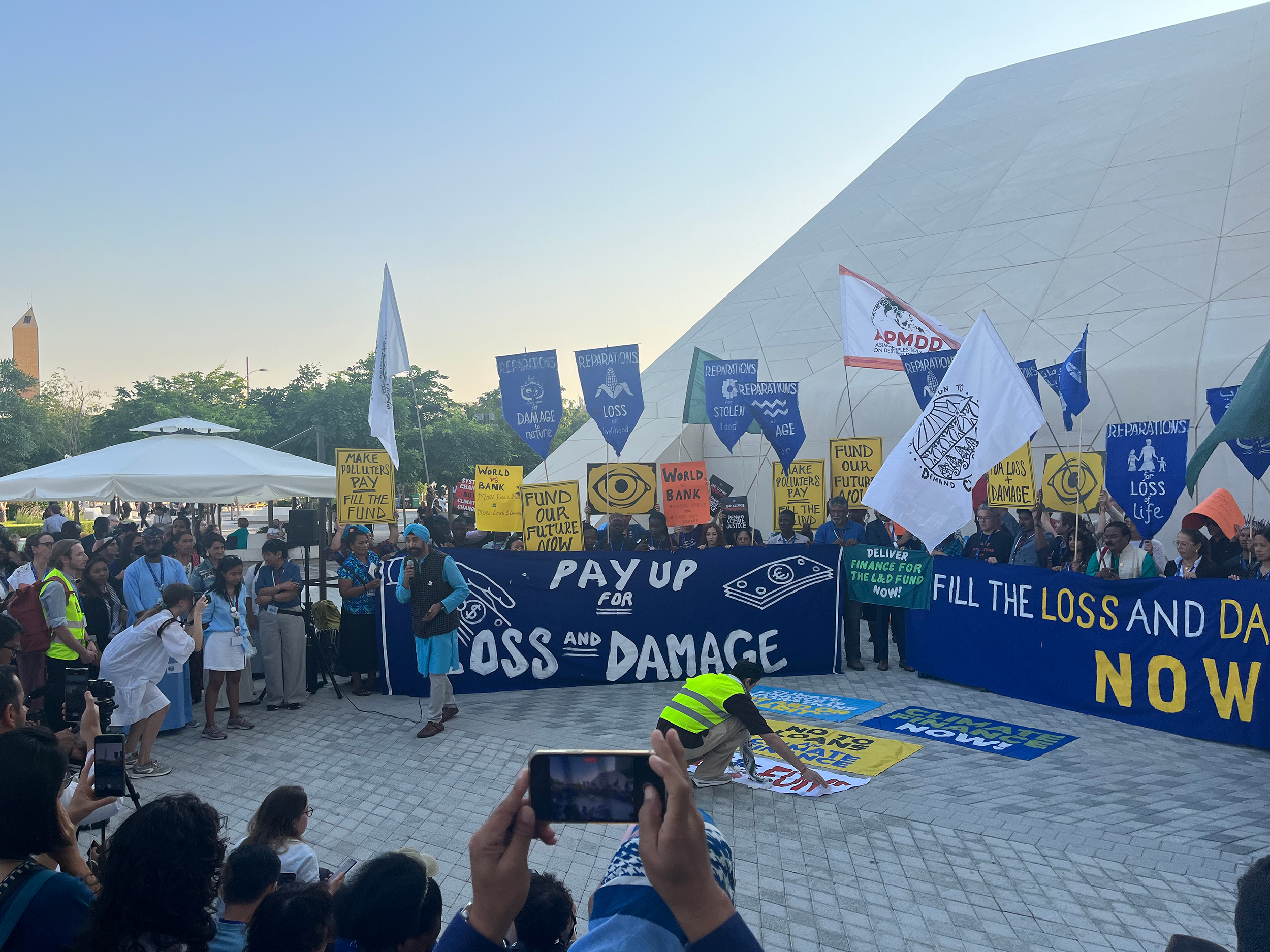A Letter from Jed and Jenny Koball, serving in Peru
Spring 2024
Write to Jed Koball
Write to Jenny Koball
Individuals: Give online to E132192 in honor of Jed and Jenny Koball’s ministry
Congregations: Give to D500115 in honor of Jed and Jenny Koball’s ministry
Churches are asked to send donations through your congregation’s normal receiving site (this is usually your presbytery)
Subscribe to our co-worker letters
“I tell you,” he replied, “if they keep quiet, the stones will cry out.” – Luke 19:40
Dear friends,
With two hands Maria lifted a softball sized rock above her head. With a violent thrashing of her arms, she launched it down into the soft riverbank beneath her. Splat! A small crater revealed the black mud and a putrid smell wafted into the air.
“That’s crude!” Maria exclaimed. “Crude oil.”
Standing at the mouth of the Chillon River on the Peruvian coast of the Pacific Ocean we could see just south of us the Valero Fuel storage facility. And to the north, not much further, is the Repsol Oil refinery. In between these two industrial beasts is the human settlement called Marquez – Maria’s home for the past 40 years.
“These waters used to be clean. When I first came here we could drink from these waters. Today they are poisoned and deadly. They make people sick.” Indeed, the Chillon River is considered the most contaminated river in all of Peru. From oil spills to chemical dumping to human waste, the river has become a cesspool of toxins that flow past the crowded shores and pour into the sea.
“With climate change,” she continued, “we now get rains and storms that we never used to have. Sometimes they push the waters back upstream. One day they are going to flood our neighborhood with poison. What will happen when the river spills into our streets and homes?”Just three days earlier from my meeting with Maria in the settlement of Marquez there on the Peruvian Coast, I was on the other side of the world representing the Presbyterian Church (U.S.A.) as an official observer to the 28th United Nations Forum on Climate Change hosted by the Emirate of Dubai. On the first official day of meetings, the 190 States participating in the conference agreed on the creation of a “Loss and Damage Fund.” The idea is that the most industrialized nations of the world which generate the most greenhouse gas emissions while suffering the least from climate change disasters will provide increased funding for the developing nations of the world who generate the least amount of greenhouse gas emissions yet suffer the most from climate change disasters. While the creation of the Fund was widely celebrated, actual commitments to its funding were few and far between. With hundreds of billions of dollars needed, the United States committed a mere $17 million. And so, as the days passed by the voices of observers to the conference began to rise with indignation.
As Maria explained to me how Marquez is under a constant environmental assault from an ever-industrializing world, I could not help but hear in the back of my mind the cries of others from around the world who gathered in Dubai and also worried about their neighborhoods being overcome by the impacts of industrialization, namely the contamination and climate change it has induced.
Pastor Pedro Bullon, a board member of our Joining Hands partner in Peru, is a minister in the Lutheran Church of Peru. He is the one who first introduced me to Maria some years ago. Maria is a member of the Divine Light Lutheran Church in Marquez. As Pedro tells me, the Lutheran Church of Peru has been accompanying the people of Marquez for over 20 years in their struggle for a clean river, retaining walls and a safe beach. And while their accompaniment and advocacy have brought in the technical support of our Joining Hands partner, it is not enough. More noise is needed. More voices. More bodies. More churches. More people like Maria who launch rocks to the ground, not to hurt others but to speak truth to the world.
This Spring, the Bryn Mawr Presbyterian Church near Philadelphia will send the first of two groups to Marquez to meet Maria and the people who walk with her. They do not come with resources to share or expertise to impart, rather they will come with ears to listen, eyes to see, arms to embrace and above all minds and hearts to be moved and transformed. They will come in solidarity.
When I was in Dubai, I had mixed emotions. I won’t lie; a part of me was filled with cynicism as I thought about all the nations represented, all the industries speaking in their ears, and all the affected peoples around the world who had little access to the decision makers. I was saddened that it took 28 years for the nations of the world to make a seemingly obvious decision to help the people of the world most affected by climate change, and even then, the decision seemed more about making headlines than a substantial impact.
But, leaving Dubai, a part of me was also filled with hope, especially as I remembered those who gathered in protest. From every corner of the world, those without decision-making power gathered in unison to evidence their ever-growing people power. Because indeed, there is power in numbers. There is strength in solidarity. There is hope in our coming together.
As this year unfolds, I pray that you, too, may come together with us, with the people of Marquez, with the people in your own backyard, with the people on the other side of the world, the people who know about loss and damage, the people everywhere who hunger and thirst for justice, for clean water, for peace and stability, for God’s kindom made known right here and right now. And whether you can be with us in person or be with us in spirit from afar, know how very grateful we are for the many ways you already join with us in humbling prayer, in unified voice, in courageous action, in generous giving, and even in righteous raising of rocks that speak truth to the world!
With immense gratitude,
Jed (and on behalf of Jenny)
![]() You may freely reuse and distribute this article in its entirety for non-commercial purposes in any medium. Please include author attribution, photography credits, and a link to the original article. This work is licensed under a Creative Commons Attribution-NonCommercial-NoDeratives 4.0 International License.
You may freely reuse and distribute this article in its entirety for non-commercial purposes in any medium. Please include author attribution, photography credits, and a link to the original article. This work is licensed under a Creative Commons Attribution-NonCommercial-NoDeratives 4.0 International License.





